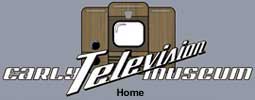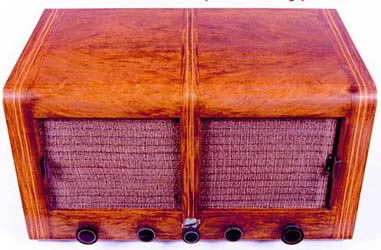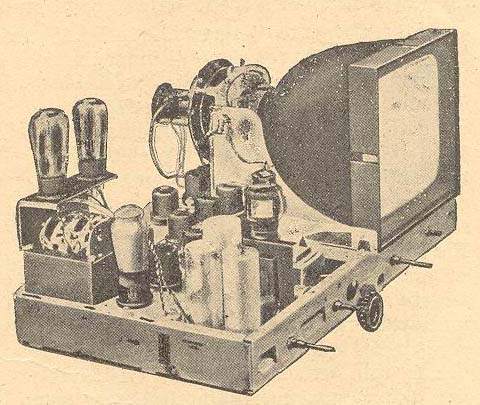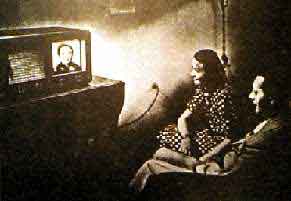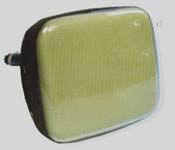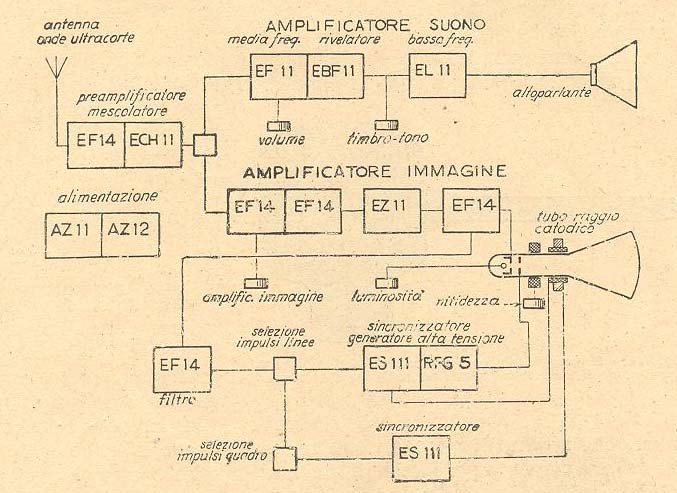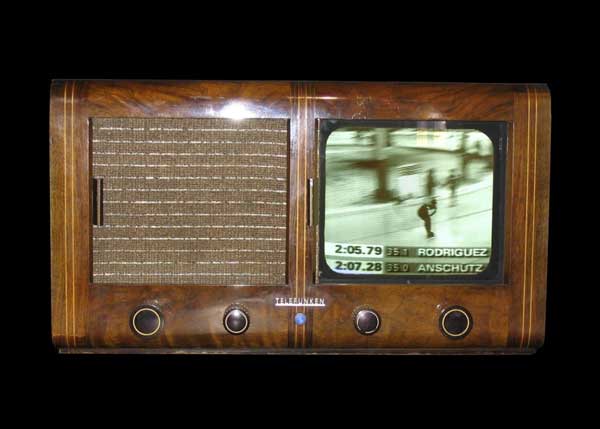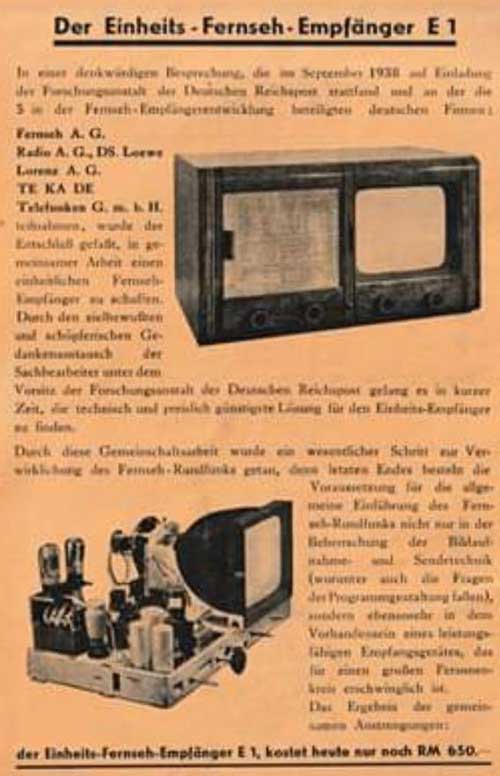Early Electronic Television E1 Volkfernseher Courtesy of TVHistory.TV 1938 Table Model "Volkfernseher" officially called "Einheitsfernseher E1" The German set was made by several companies simultaneously: Fernseh AG, Lorenz, Radio AG D.S. Loewe, Tekade, and Telefunken. It was to have been manufactured in large quantities, but World War Two stopped production. Eckhard Etzold of Braunschweig, Germany, has a website with many pictures and much information on the set. Here is an article describing the set. Here is a schematic diagram, published in the Hungarian magazine R diótechnika (Courtesy of Zolt n Kalmer)
The set was more sophisitcated than the British or American receivers of the time, using a rectangular picture tube and flyback type high voltage (EHT) supply. The diagram below shows (in Italian) that the set uses one stage of RF amplification (EF14), followed by a oscillator/mixer (frequency changer)(ECH111). There is one stage of audio IF (EF11), a detector (EBF11), and audio amplifier (EL11). The video IF section has two stages (EF14), a full wave detector (EZ11), and video amplifier (EF14). The EZ11 was intended as a full wave power supply (HT) rectifier. This indicates that the IF frequency was probably quite low. The video section feeds a sync separator (EF14), then horizontal (line) and vertical (frame) oscillator/output stages (ES111) and a rectifier for the high voltge (EHT)(RFG5). The ES111 may be a power triode. The vertical (frame) timebase is probably similar to arrangement employed in the Baird T18, that is where the deflection yoke (scan coils) also act as the oscillator transformer. The EF11, EF14 and ECH11 are metal tubes (valves). (Thanks to David Boynes for the above information) Courtesy of Giacomo Pruzzo
From a 1939 German catalog
|
||||||
